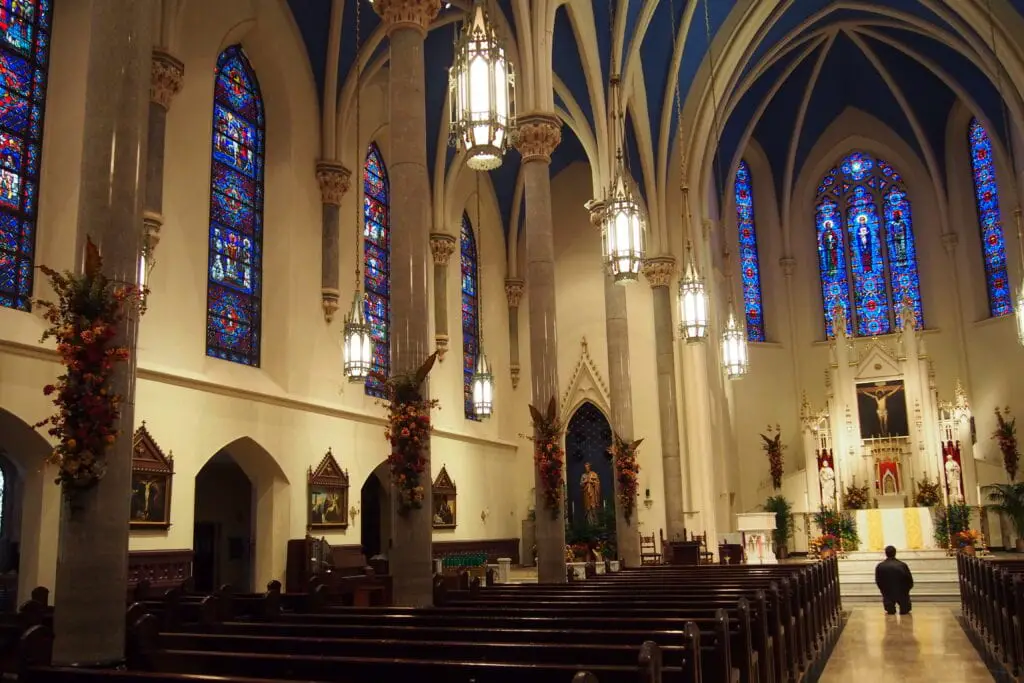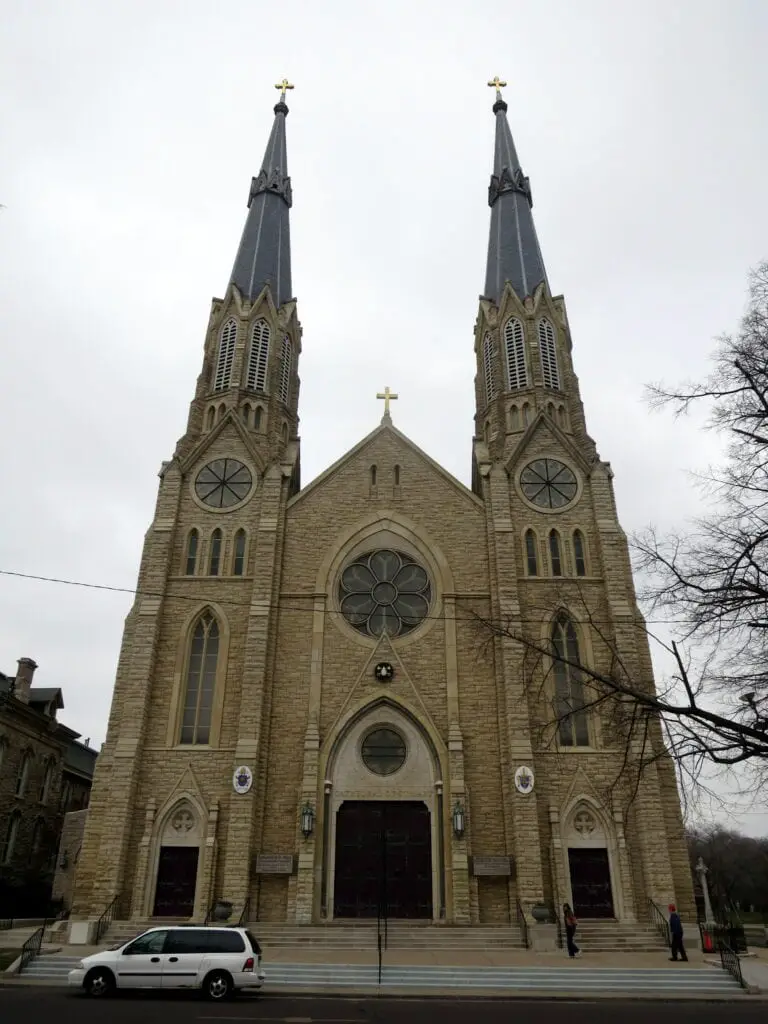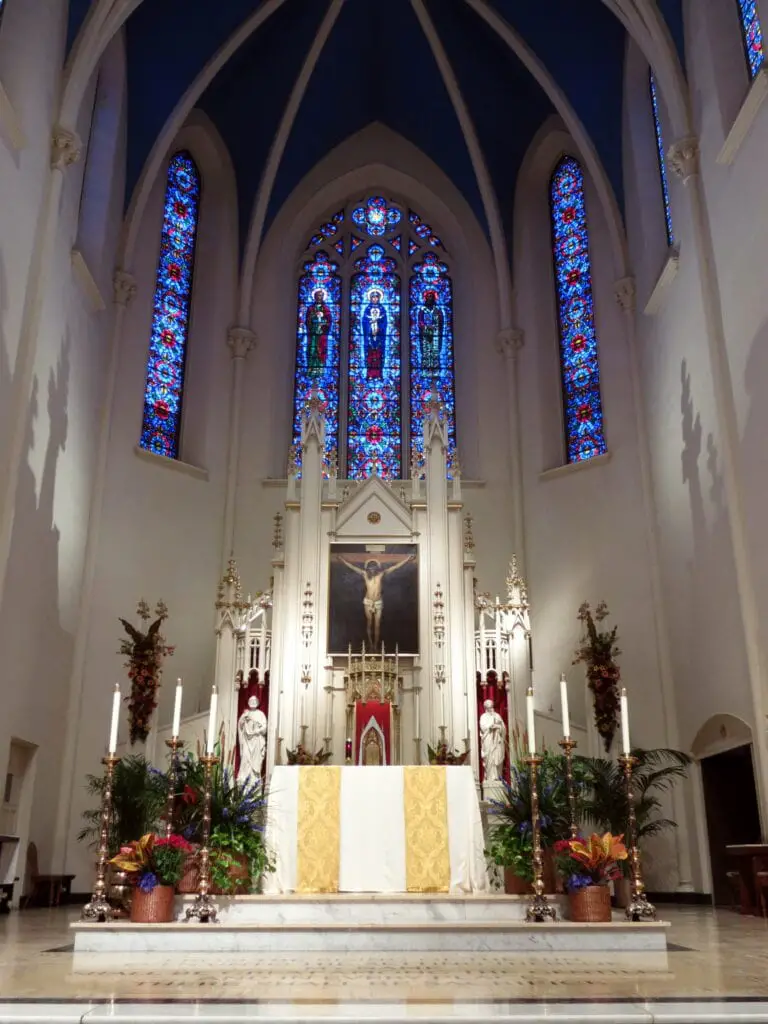The Dawn of Catholicism in Peoria: A Historical Background
The Cathedral of Saint Mary of the Immaculate Conception, a significant religious edifice in Peoria, Illinois, is a testament to the city's rich religious history.
The origins of Catholicism in Peoria can be traced back to the inaugural Mass held at Fort Crevecoeur, located across the Illinois River from the current city. This marked the inception of a religious journey that would eventually lead to the establishment of St. Mary's Church in 1846.
The church that would later evolve into the first St. Mary's Cathedral was constructed in 1851. This sacred structure served as a beacon of faith for the local community, providing a spiritual refuge for the growing Catholic population in Peoria.
However, as the congregation expanded and the original church aged, the need for a new, larger cathedral became apparent.
The foundation stone for the existing cathedral was placed on June 28, 1885, under the guidance of Bishop John Lancaster Spalding. This event marked a significant milestone in the religious landscape of Peoria, paving the way for the construction of a cathedral that would stand as a symbol of faith for generations to come.
Architectural Grandeur: A Closer Look at the Cathedral's Design
The Cathedral of Saint Mary of the Immaculate Conception, designed by renowned Chicago architect Casper Mehler, is a magnificent example of the Gothic Revival style. This architectural style, characterized by pointed arches, ribbed vaults, and flying buttresses, is reminiscent of the iconic St. Patrick's Cathedral in New York City.

The cathedral's exterior, composed of Anamosa Limestone, exudes an aura of grandeur and reverence. The twin spires on the main façade, rising to a height of 230 feet, stand as towering symbols of faith against the city skyline, visible from various points in Peoria.
Inside the cathedral, the painting of the Crucifix on the reredos behind the altar serves as a focal point. This painting, created in 1873 by the Spanish artist Yzquierda, is a significant artifact carrying a rich history. Along with a bell in the south tower, these are the only remnants of Old St. Mary's, which was taken down in 1898.
Significant Events and Renovations
Over the years, the cathedral has been the site of numerous significant events that have shaped its history. One such event was the visit of Saint Teresa of Calcutta, better known as Mother Teresa, in 1995. Her visit drew global focus to the cathedral and made a lasting impression on the local community.

In addition to these events, the cathedral has undergone several renovations to preserve its historical integrity while accommodating the needs of the modern congregation. A major renovation was undertaken between 2014 and 2016, breathing new life into this historic structure.
This renovation project, carried out by Daprato Rigali Studios, involved extensive restoration work to ensure the cathedral's preservation for future generations.
The Legacy of Archbishop Fulton J. Sheen: A Connection to Peoria
The cathedral holds a special place in the life and legacy of Archbishop Fulton J. Sheen. Born and raised in Peoria, Sheen served as an altar boy at the cathedral and was ordained a priest there in 1919. His connection to the cathedral and Peoria is a source of local pride.

In 2019, Sheen's remains were transferred to the cathedral and interred in a marble monument at a side altar. This event marked a significant moment in the cathedral's history, further cementing its place in the annals of the Catholic Church.
The Cathedral of Saint Mary of the Immaculate Conception Today
Today, the Cathedral of Saint Mary of the Immaculate Conception continues to serve as an active place of worship and the seat of the Diocese of Peoria. It stands as a symbol of faith and community, where generations of Peorians have gathered to celebrate, mourn, and find solace.
In recent news, the cathedral has continued to host events and services, maintaining its role as a central hub for the local Catholic community. Despite the challenges of the modern world, the cathedral remains a beacon of hope and a testament to the enduring faith of the people of Peoria.

